This is a complete list of every vegetable variety I’m growing this year. It’s the result of decades of trial and error—choosing, testing, and replacing—until I could say with confidence that these are the ones worth growing.
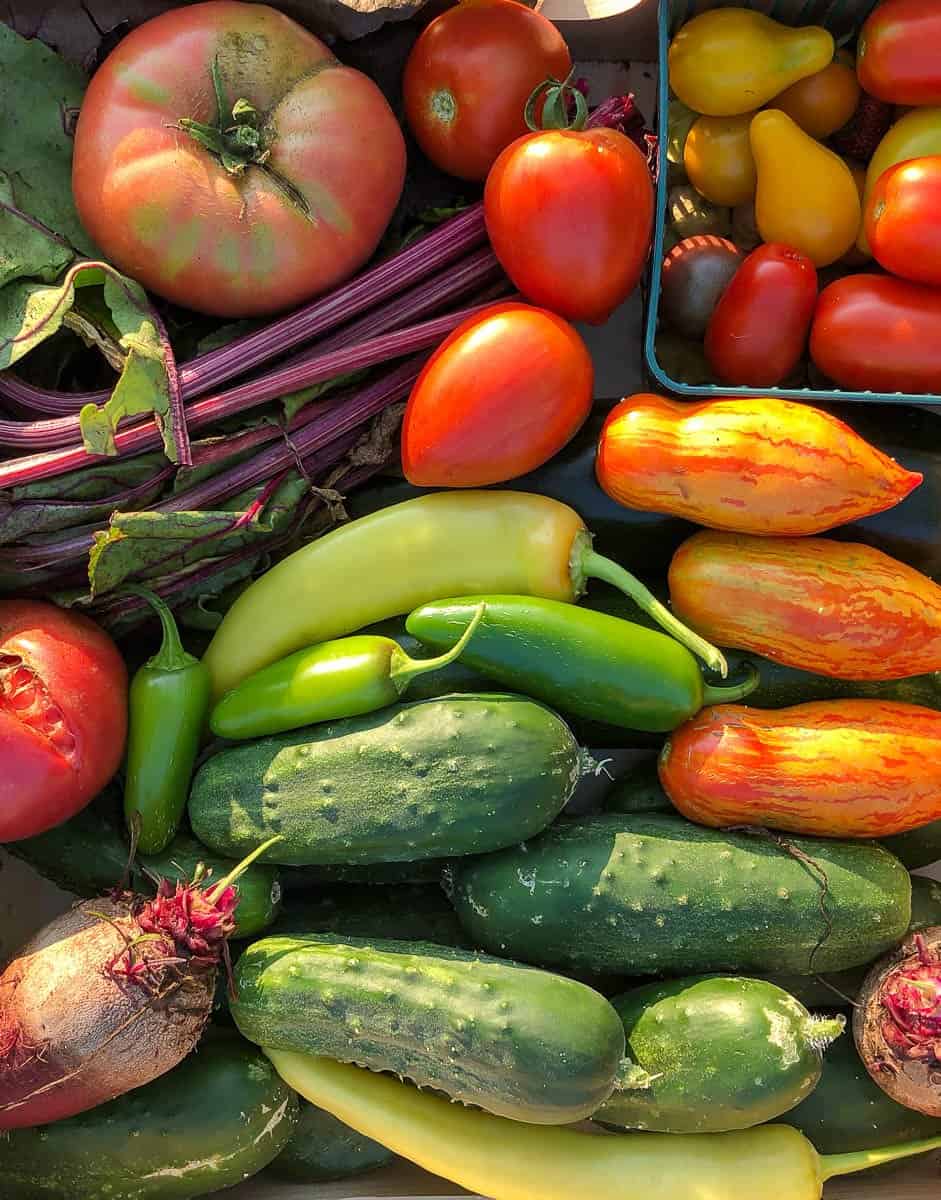
Every photo in this post is mine, taken in my own garden, of vegetables I actually grew. No stock photos. No grocery store stand-ins. Just dirt, sunlight, and proof.
I’ve grown varieties that were beautiful but bland (Thelma Saunders squash), high-yielding but miserable to eat (Reisetomate tomato), and a few that just sat around until frost took them out of their misery.
This list is what’s left after all of that—the standouts. The ones that didn’t just grow, but proved they deserve the space.
If I refer to a seed as being sent to me by AAS, that means the seed is an All American Selections winner and I was given the seeds to try. AAS is an organization that tests and judges new seed varieties across North America.
Table of Contents
🥦 Broccoli, Cauliflower & Cabbage
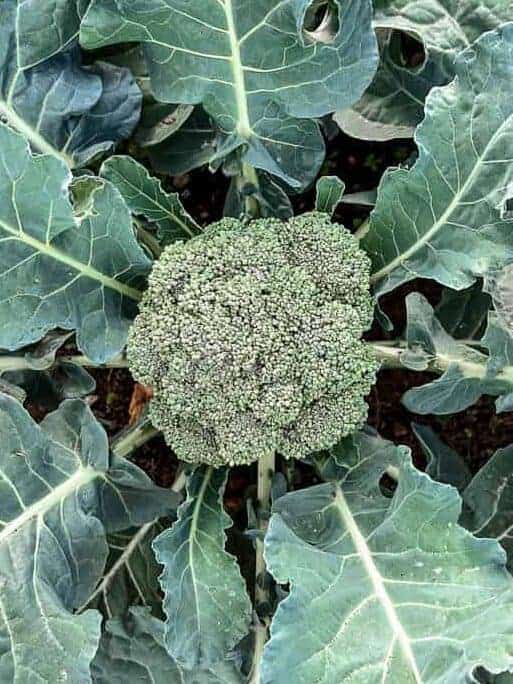

🌱 Broccoli (Burney)
Why I Grow It: It doesn’t bolt the second the weather changes or I glance at it sideways.
Notable Traits:
- Uniform heads, not as tight as Purple Magic
- Keeps producing side shoots
- Handles heat without drama
Best Use: Roasted or broccoli soup.
🌱 Broccoli (Purple Magic)
Why I Grow It: AAS sent me the seeds last year - it grew so impressively that I'm growing it again.
Notable Traits:
- It's very pretty
- Big compact heads
- It *seemed* to me that it wouldn't produce side shoots until weather cooled.
Best Use: Raw with dip, but it does keep its colour when cooked.
🌱 Cabbage (Gunma)
Why I Grow It: A Gunma cabbage was gifted to me last year. I'll grow it every year now.
Notable Traits:
- Big flat heads (not round)
- Leaves are soft and peel easily
- Perfect for making cabbage rolls.
Best Use: Cabbage rolls
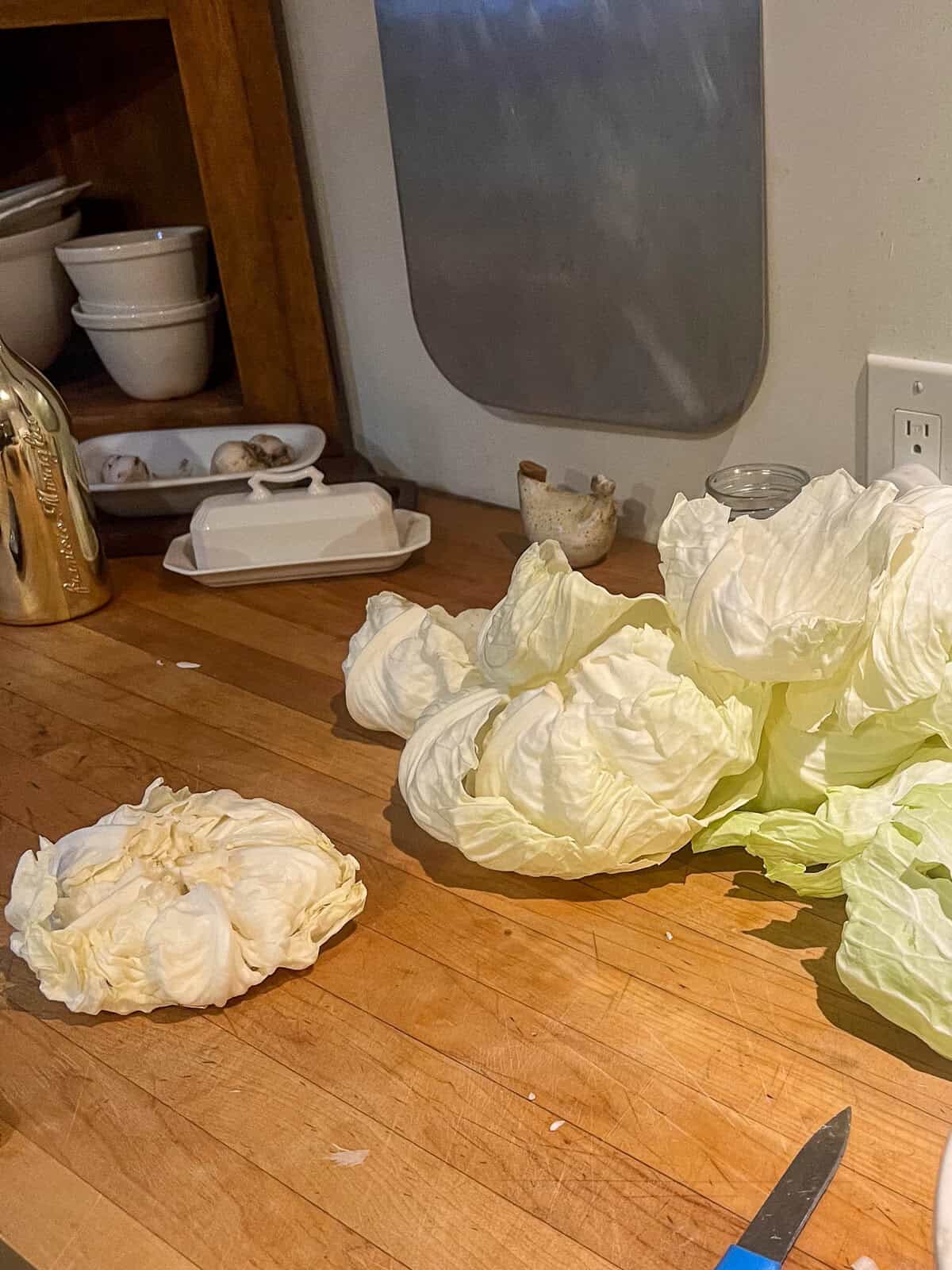
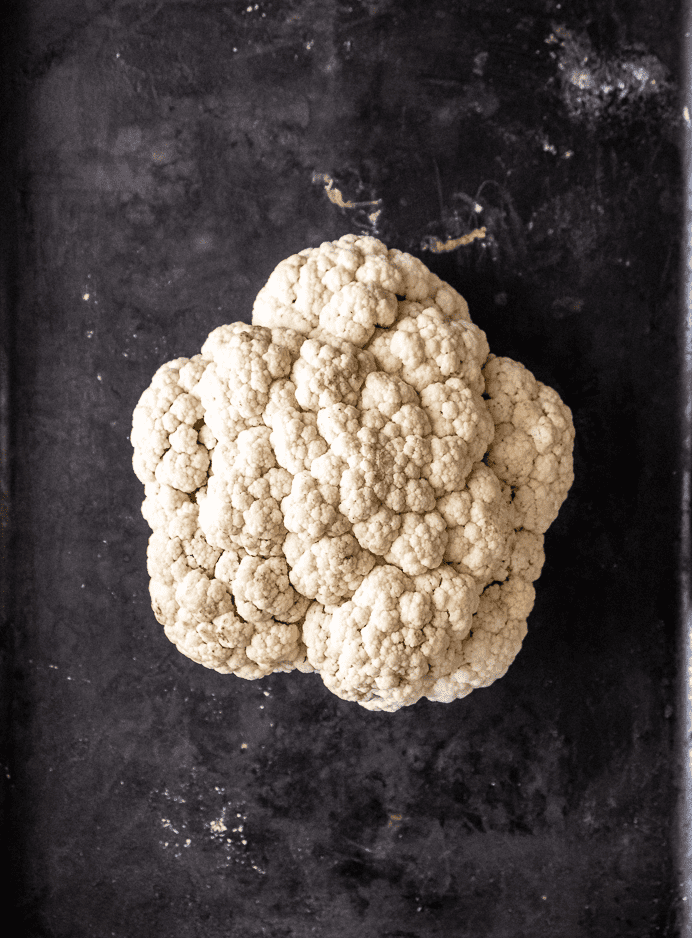
🌱 Cauliflower (‘Snow Crown’ )
Why I Grow It: I'm a piglet for punishment? It's HARD to grow magnificent cauliflower.
Notable Traits
- They might grow ... they might not
- Turns purple underneath if stressed
- Kind of a jerk if I'm being honest
Best Use: Bragging rights & curried cauliflower soup.
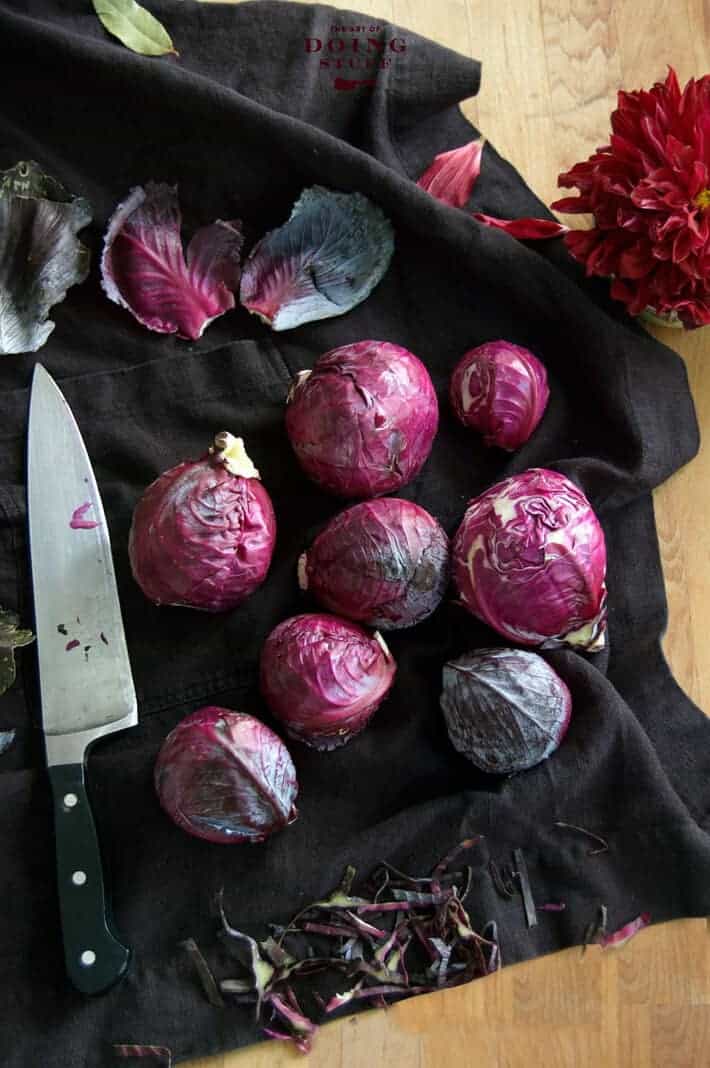
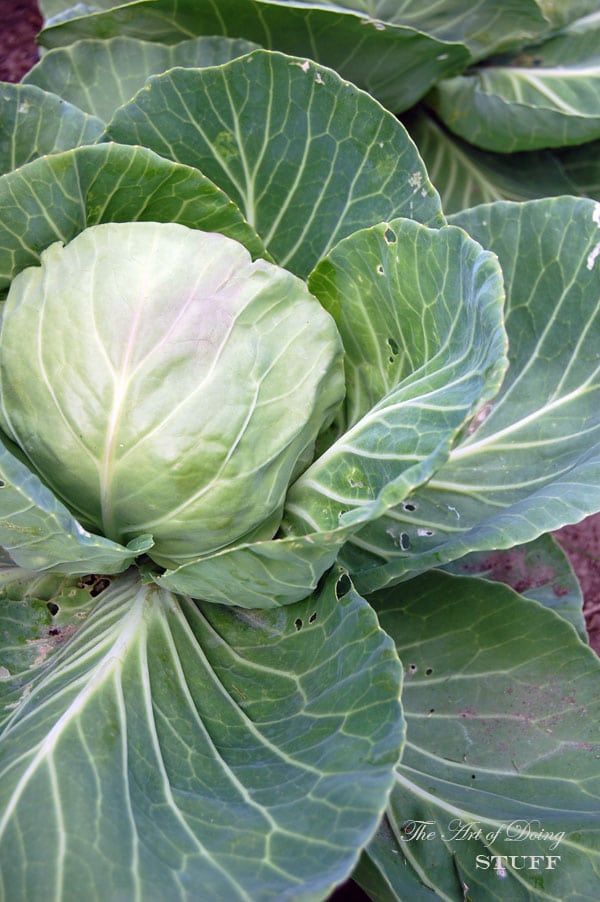
🌱 Cabbage (‘Red Acre’ )
Why I Grow It: Red cabbage is a lot less attractive to cabbage moths than green.
Notable Traits:
- Less prone to cabbage moth damage
- Not prone to splitting
- Stores really well
Best Use: Shredded into classic coleslaw, or red cabbage side dish.
🌱 Cabbage (Farao)
Why I Grow It: It reliably gives me big heads of cabbage every year.
Notable Traits:
- Smooth, dense heads
- It's a cabbage and it tastes like cabbage. 🤷♀️
Best Use: Classic coleslaw, cabbage soup, cabbage rolls.
🥬 Leafy Things That Earn Their Keep
I usually grow a few different kinds of lettuce. I like to have a leaf, a romaine and an iceberg.
‘Merlot’ is a dramatic red leaf lettuce
‘Black Seeded Simpson’, is as close to a foolproof lettuce as you can get (in my zone 6).
'Parris’ is a romaine.
‘Paonia’ is the wild card. It's an iceberg lettuce that takes longer to grow. That slow growth is contingent on the lettuce having a moment of delirium and actually deciding to grow.
Purple Basil is grown partly for pizza and partly for flower arranging.
Orach is spinach-like which I'm growing both for eating and flower arranging.
Swiss Chard (Bright Lights & Oriole) don't produce as much as the more common green/white variety of chard but they're so much nicer looking.

This is from back in the olden days when I grew everything in my front yard.
That was the biggest my Bright Lights swiss chard has ever grown.
Why?
Soil quality.
🥕 Roots, Bulbs & Beets
🌱 Beets (Boldar, Merlin, Detroit Dark Red)
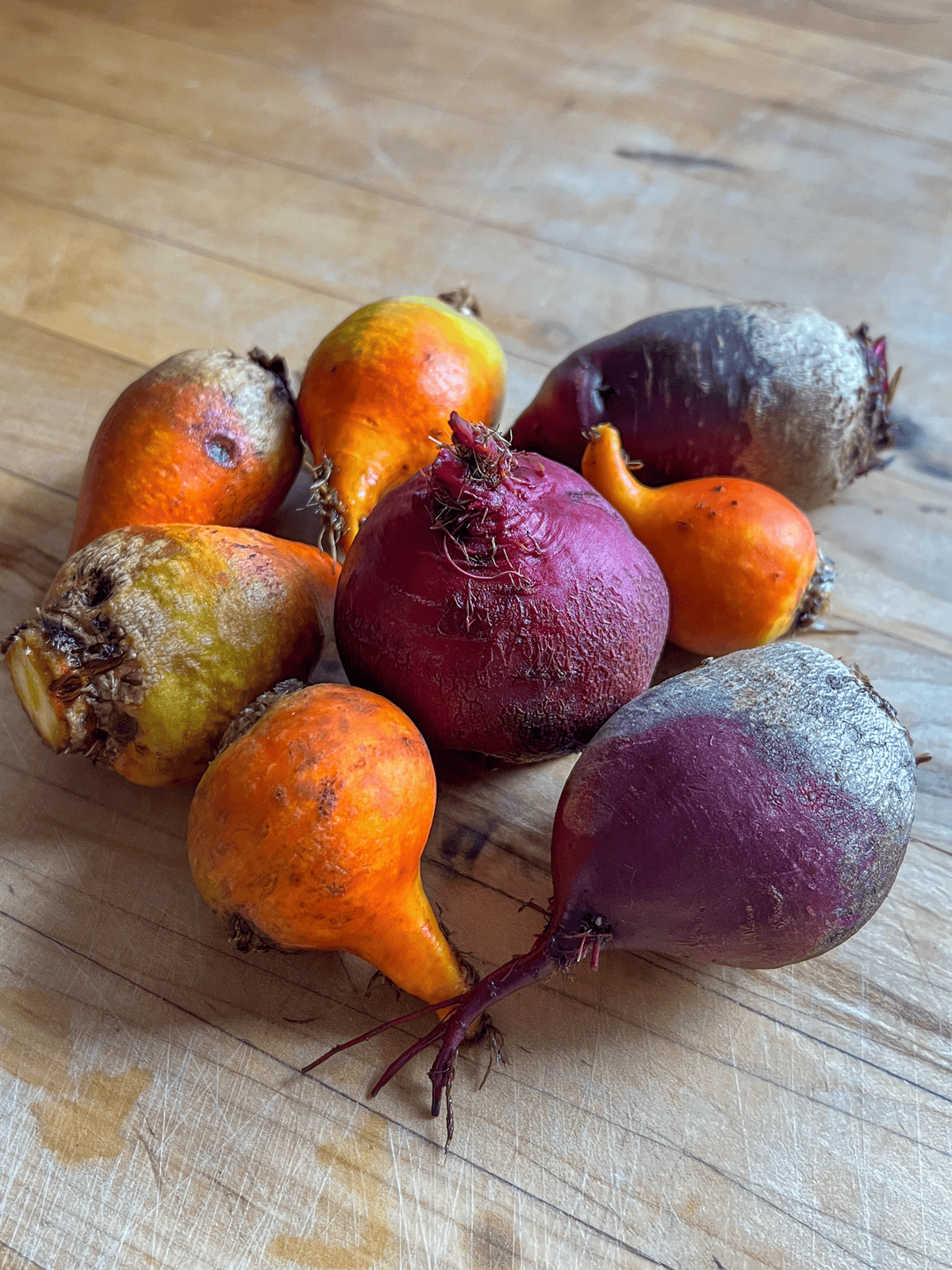
Boldar (gold), Merlin (2 purple beets in middle and foreground, Detroit Dark Red (darkest beet, at back)
Why I Grow Them: I used to only grow heirloom beets, but branched out looking for varieties with better production. Hybrids have that.
Notable Traits:
- Detroit Dark Red - heirloom, earthy tasting, sweet
- Merlin - hybrid, sweeter than Detroit Dark Red
- Boldar - hybrid, softer when cooked than other beets, the sweetest
Best Use: Roasted or for canning pickled beets.
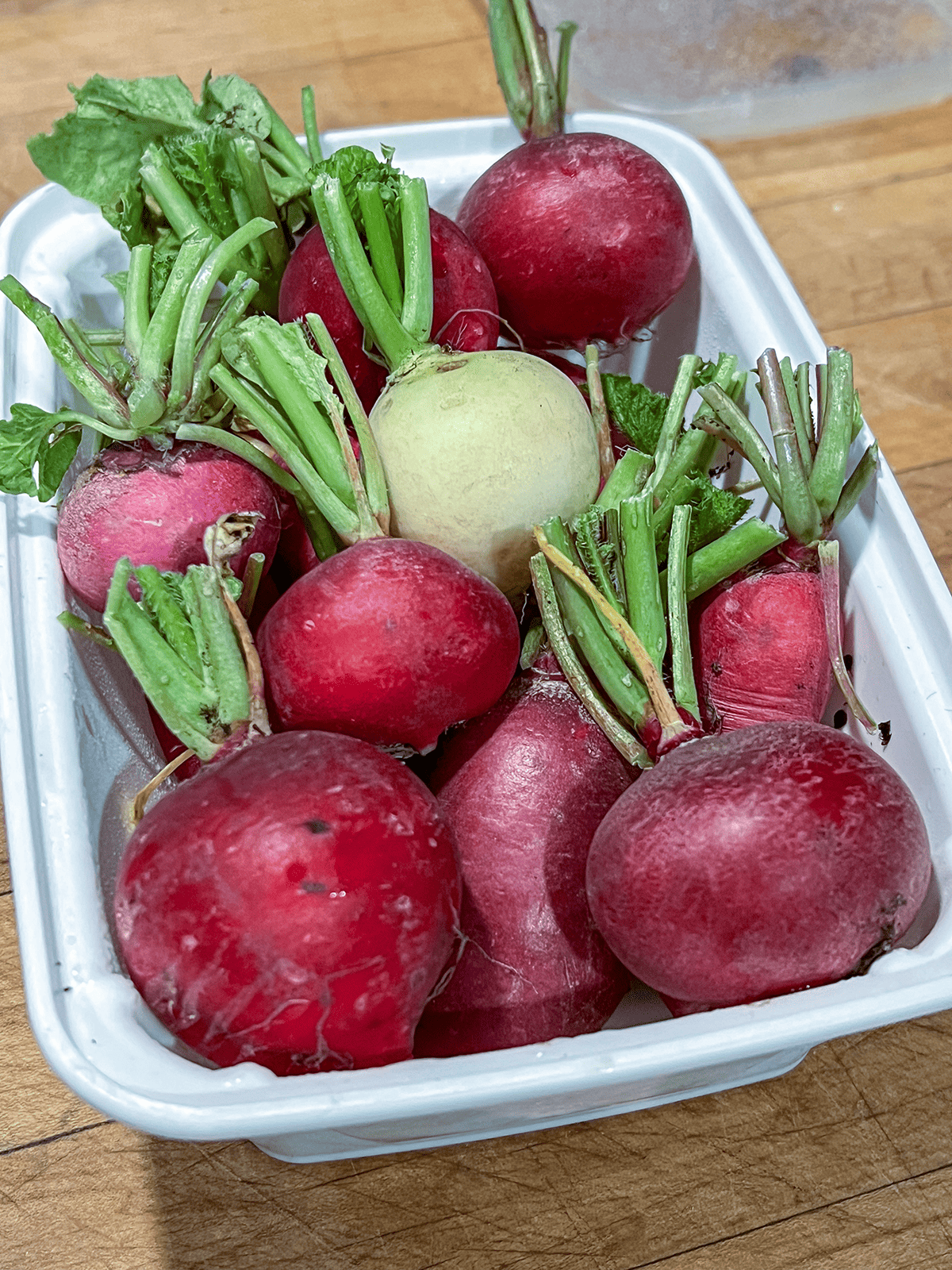
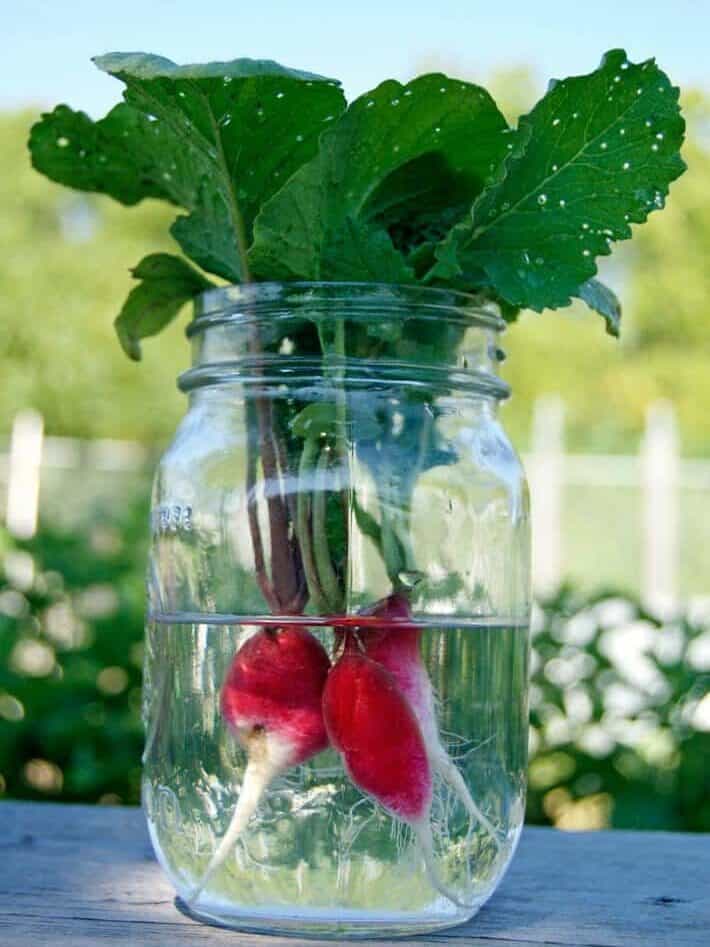
🌱 Radish (Raxe)
Why I Grow It: It’s can grow as big as a baby's head and retain good flavour. Just like a baby's head does.
Notable Traits:
- Deep red skin
- Crisp interior
- Fast to mature
Best Use: Eaten raw dipped in salt with a piece of soft white bread and butter. Old school.
🌱 Radish (French Breakfast)
Why I Grow It: It’s quick, dependable, and the texture is excellent—not spongy like grocery store radishes.
Notable Traits:
- Red top with white root
- Slender, not round
- Fast to mature
Best Use: Same as Raxe.
🌱 Celery (Tango)
Why I Grow It: Because grocery store celery is just water wearing a green costume.
Notable Traits:
- Being able to pick individual stalks from the garden when needed.
- Packed with flavour—not just crunch
- Early maturing
Best Use: Diced into soups or eaten plain like it’s 1983 and you're on a diet with your mom.
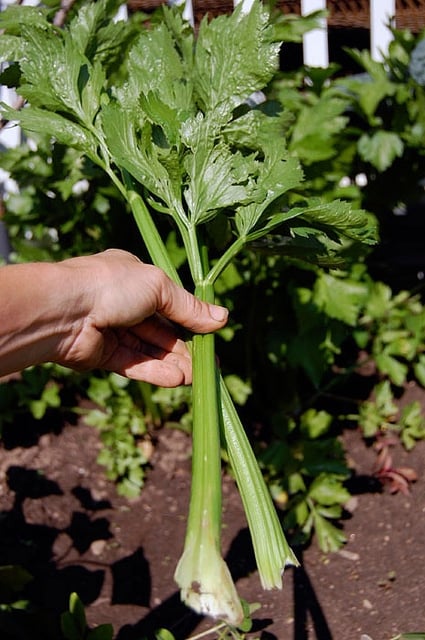
Would you like to save this stuff?


🌱 Carrots (Bolero, Scarlet Nantes)
Why I Grow Them: I grew purple, yellow and white carrots for years but now I grow orange exclusively because anything else makes a putrid looking carrot soup.
Notable Traits:
- Bolero has thick, substantial carrots
- Scarlet Nantes are more elegant
- Store well
Best Use: Carrot Ginger Soup, Carrot cake, carrot salad
🌱 Onions (Red of Florence, Newburg)
Why I Grow Them: Red of Florence has always done well as a red onion for me, Newburg is a new experiment.
Notable Traits
- Red of Florence (red onion) keeps well
- Newburg is an heirloom variety (can save seeds)
- Store well if grown from seed rather than sets.
Best Use: Everything!
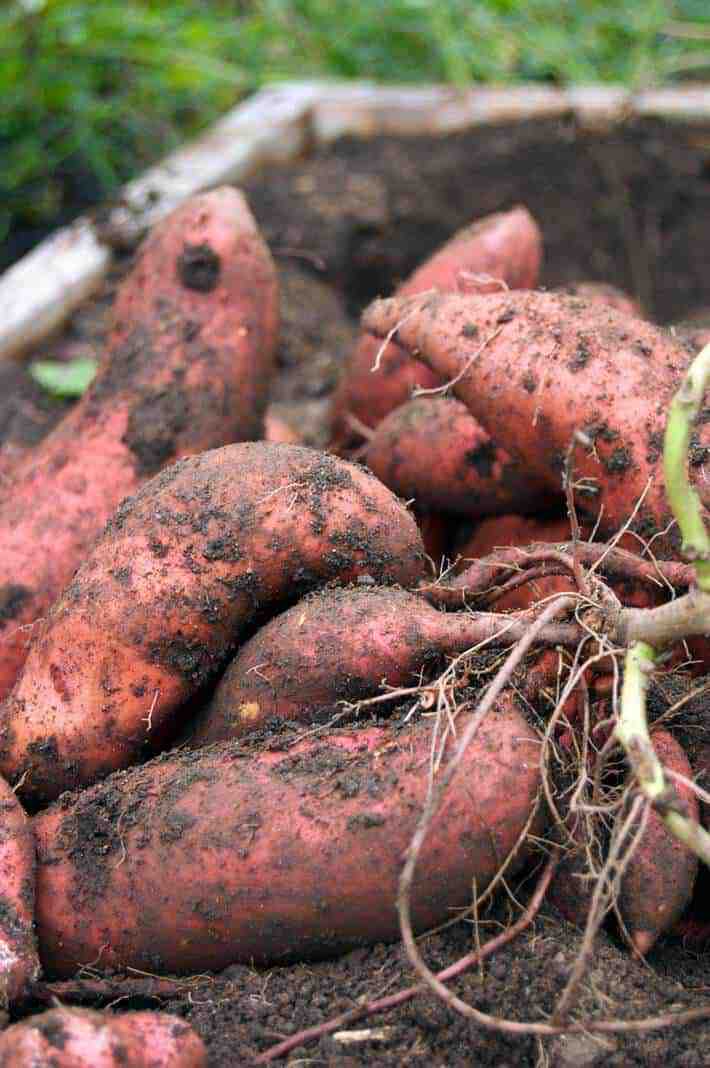
🌱 Sweet Potatoes (‘Beauregard’)
Why I Grow It: Digging sweet potatoes is like digging for buried treasure. Grow them in pots or mice will eat them all.
Notable Traits:
- Heat-loving
- Doesn't like to be crowded
- Requires 4 months to mature
Best Use: Crispy sweet potato fries obviously.
🌱 Potatoes (‘Kennebec', 'Burbank Russet')
Why I Grow Them: What kind of ridiculous question is that?
Notable Traits:
- McDonalds fries are made with Burbank
- High end restaurant fries are often made with Kennebec
- Plant them early, plant them late - either way you're going to get potatoes. They're not really fussy.
- Watch for Colorado Potato Beetles.

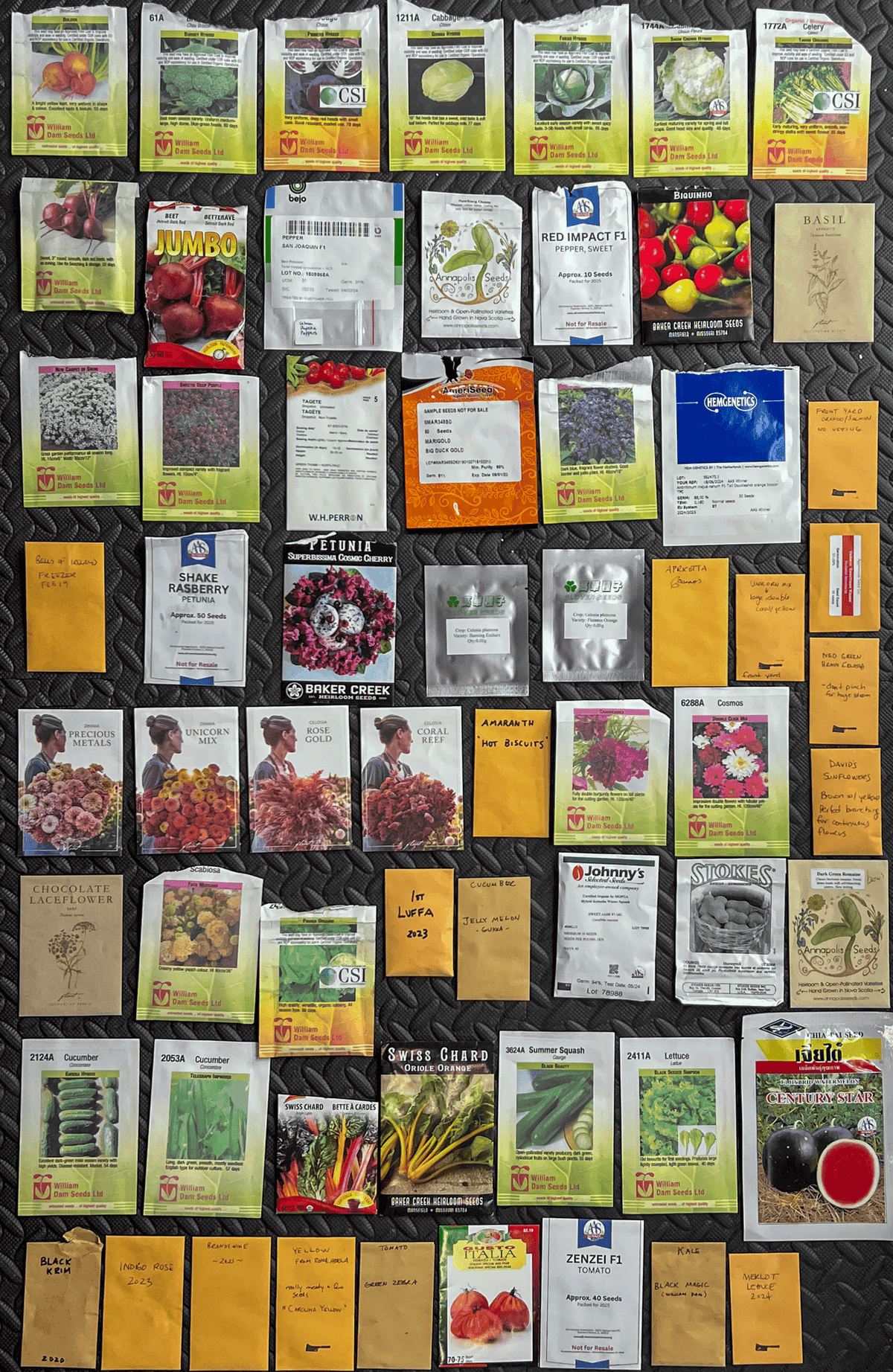
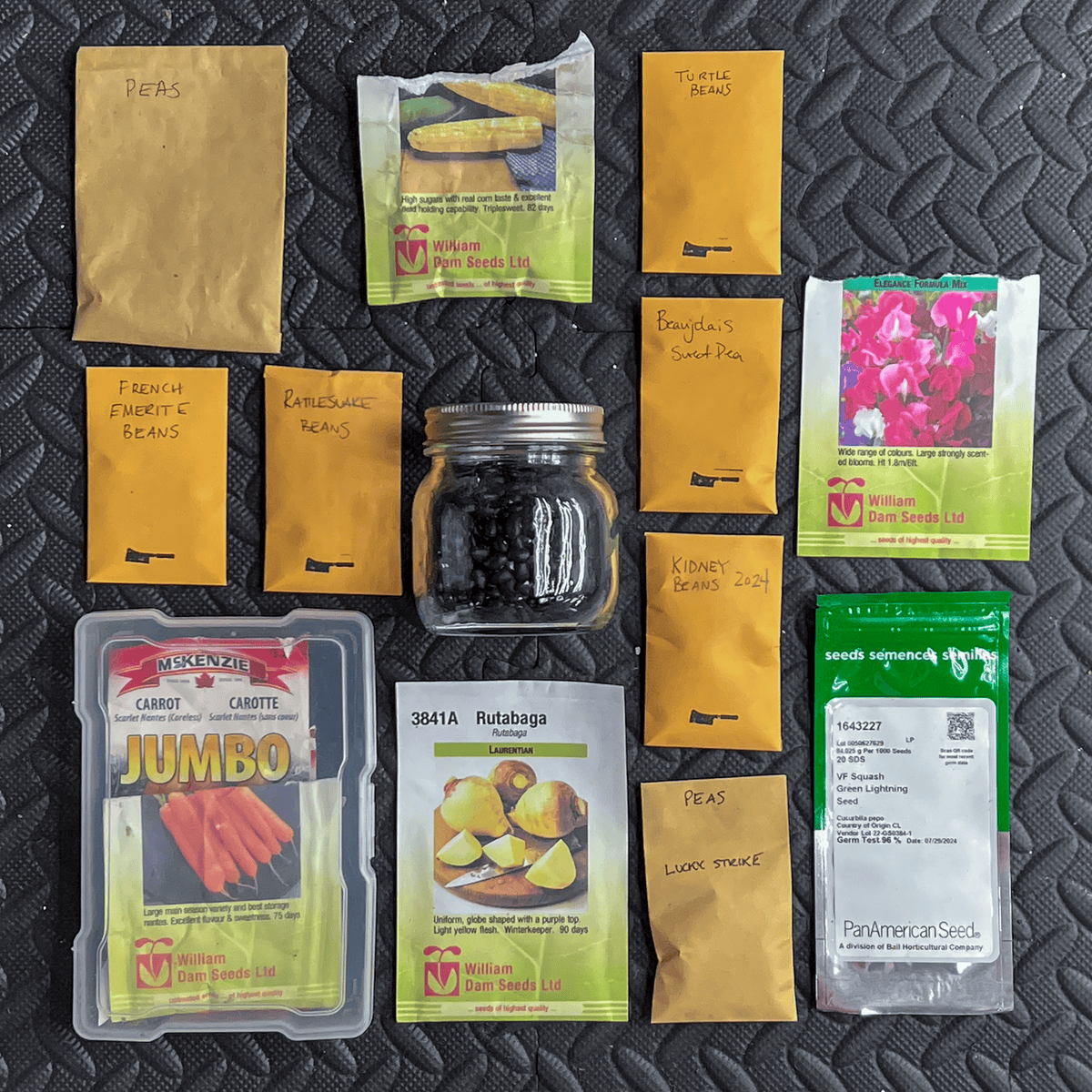

🌶️ Peppers
San Joaquin jalapeño seeds were sent to me by AAS for me to try this year. jalapeño peppers are compact and produce a lot at once. The The reason I
Red Impact is a typical sweet bell pepper, a bit elongated but produces well. I got sample seeds from AAS last year and am growing them again.
Biquinho sweet peppers with a bit of heat are high-yielding and teeny tiny. They're excellent for pickling or according to my pal Jamieson, they make a charming addition to cocktails.
🌽 Corn, Beans & Peas

Corn ( Serendipity)
Why I Grow It: It's a triple sweet corn that still has corn flavour. I'd like to find a triple sweet with a bit stronger corn flavour.
Notable Traits:
- If you grow plants closer than 1' apart you get 1 cob per stalk
- If you give 1' distance between plants you get 2 cobs per stalk.
- Excellent germination.
Best Use: Barely boiled (just to heat) and buttered & salted with with reckless abandon.
Kidney Bean
Why I Grow It: Last year I threw some decade old, grocery store bought, dried kidney beans in the ground. I grew enough to get fresh seed for this year. 2025 will be my first year growing them to eat.
Notable Traits:
- Large, red beans
- Seemed to have a high yield - unlike chick peas!
- Fast growing
Best Use: These will all be going into my wintertime batches of chili con carne.


Black Beans (Turtle)
Why I Grow It: Of everything I grow, black beans have the biggest flavour gap between homegrown and store-bought. Homegrown black beans are exponentially better.
Notable Traits:
- Dries well on the plant,
- Dense, meaty texture
- Relatively easy to shuck when dried.
Best Use: Homemade refried beans, chili con carne.
Green Beans (French Emerite)
Why I Grow It: It's just the best green bean there is. A French heirloom, stringless filet pole bean.
Notable Traits: Nice long tender beans with delicious flavour, produces heavily, the more you pick the more they produce.
Best Use: Raw for sncking, canned green beans, or pickled dilly beans.
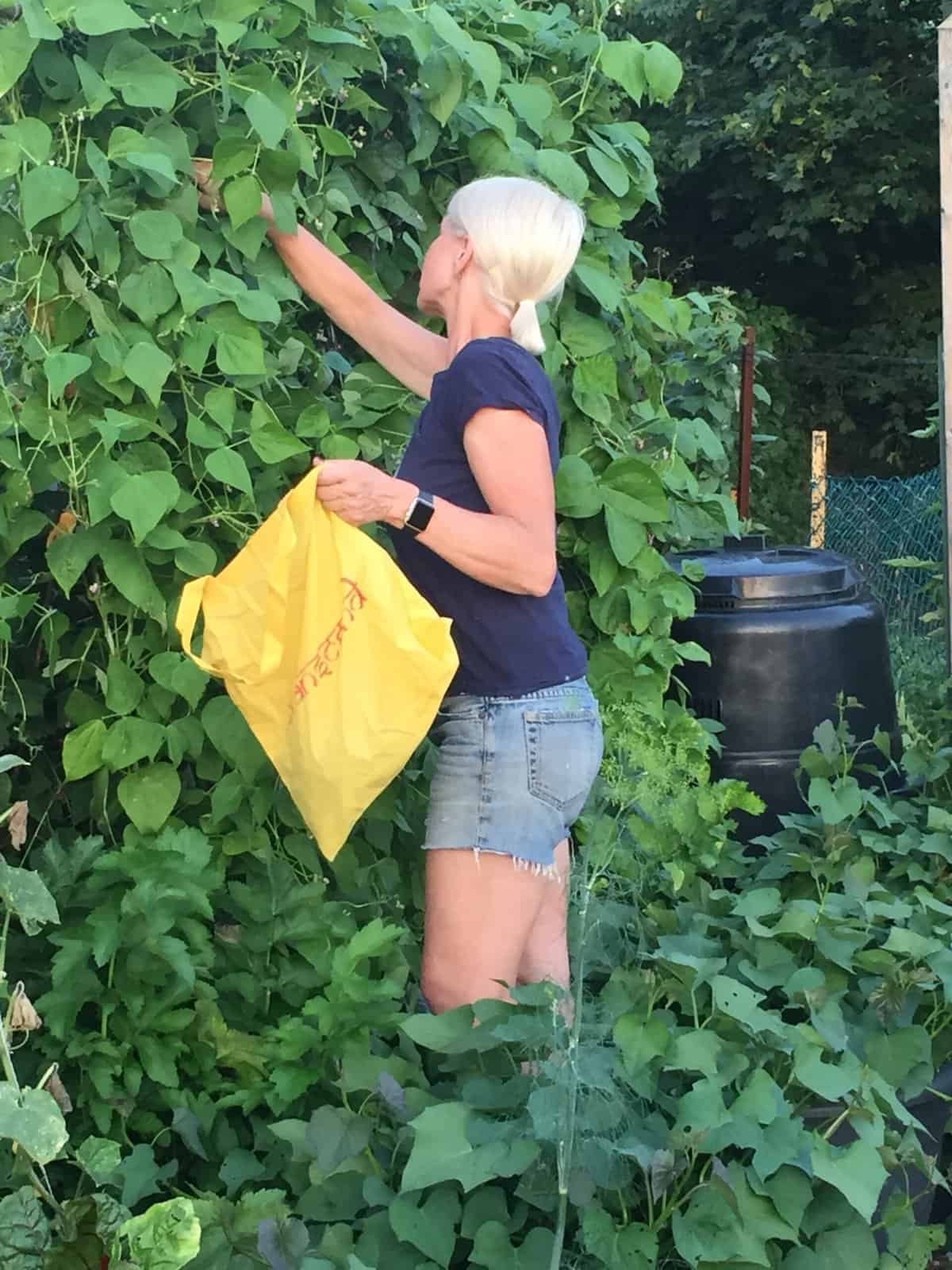
🥒 Vines, Crawlers, and Overachievers
Zucchini ‘Black Beauty’ grows like it’s on a dare.
Cucumber ‘Eureka’ and ‘Telegraph’ The first for pickling the second for slicing.
Century Star watermelon: polka-dotted rind, seedless, actually ripens in Zone 6— This is my first year trying this variety. Seeds send to me by AAS.
Jelly Melon I've tried growing this cucumber native to Southern African countries once before but raccoons got to it. I'll try harder this time.
Luffa is planted every year so I can casually mention that I grow my own luffa sponges.
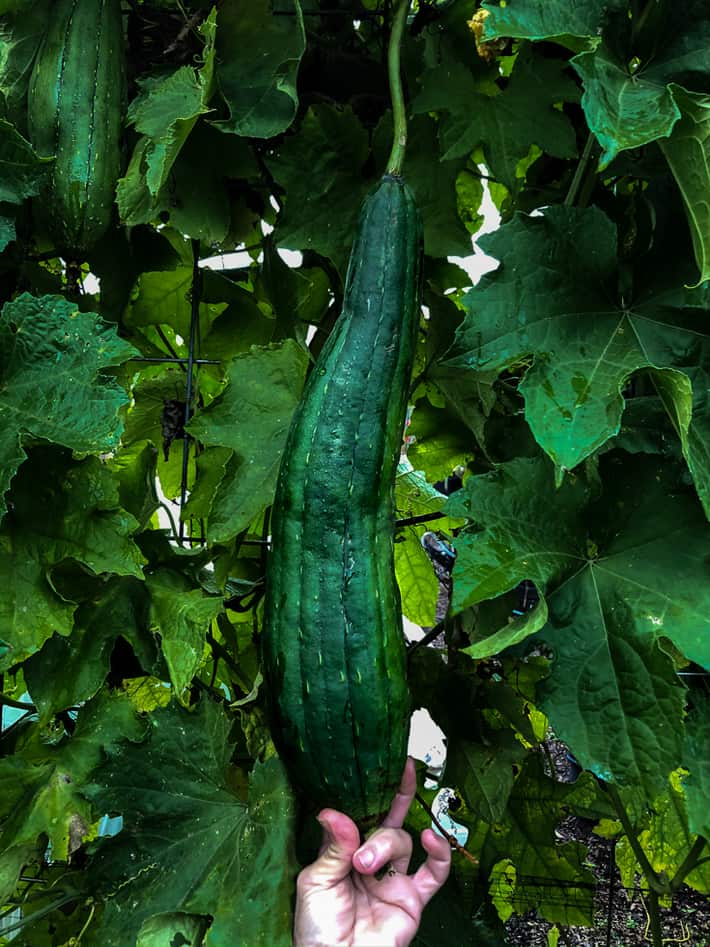

Yes, really. You can grow your own luffa (loofah) sponges if you live in zone 6. No, they do not grow in the sea.
Peas (Lucky Strike)
Why I Grow Them - I found them in the back of my seed storage case. 🤷♀️
Notable Traits
- Grows well as long as it's planted when it's still cool out
- Never makes it inside, I eat them all in the garden sitting in the dirt
- Better luck with planting in late summer in zone 6. I always miss the spring window for planting them.
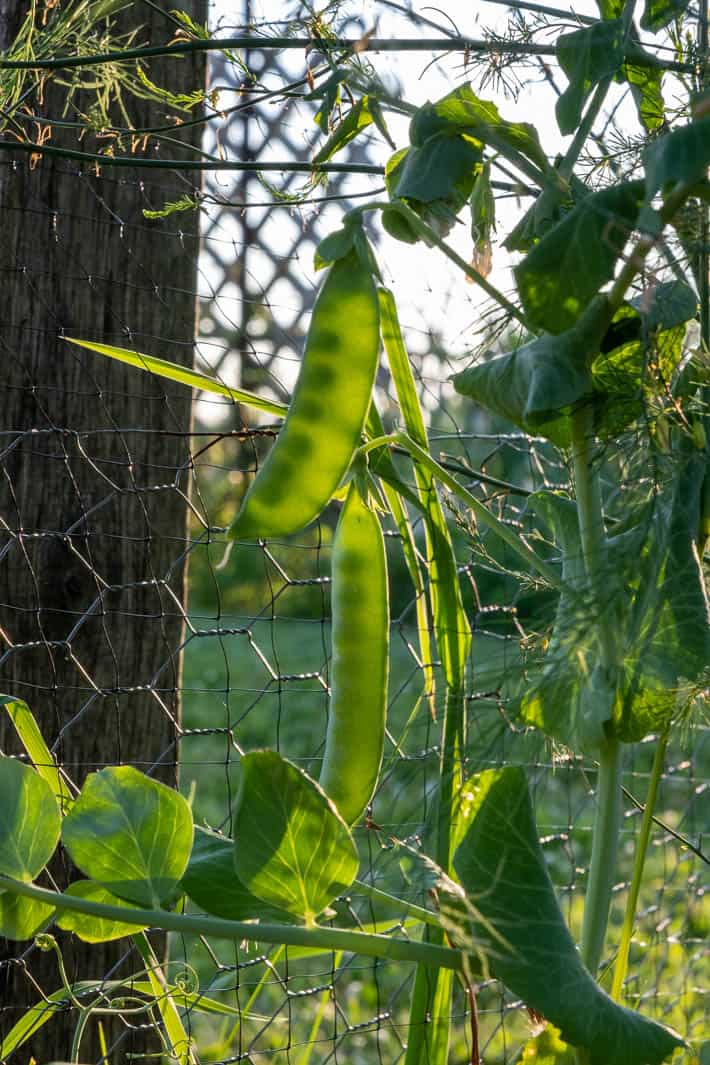
🍅 Tomatoes
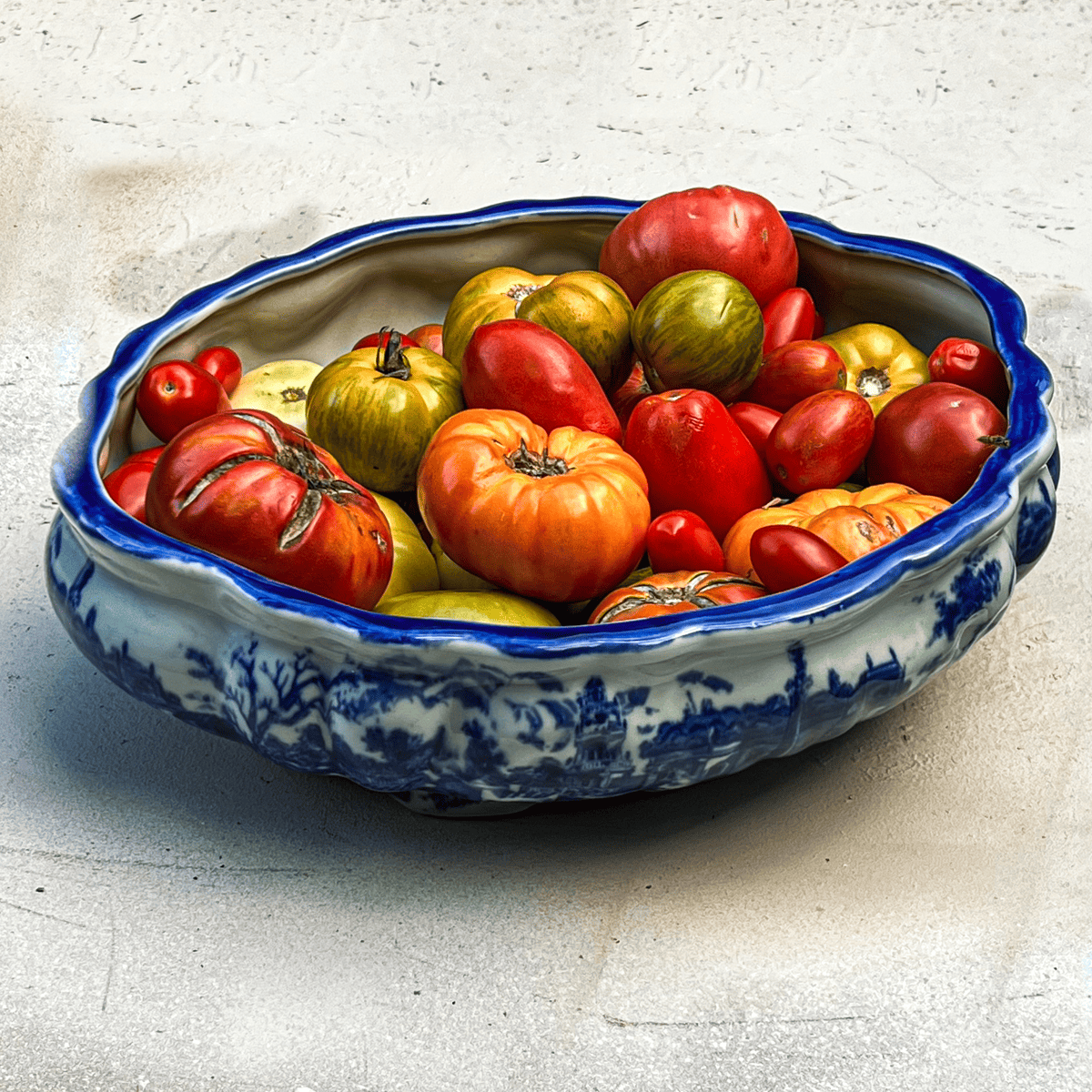
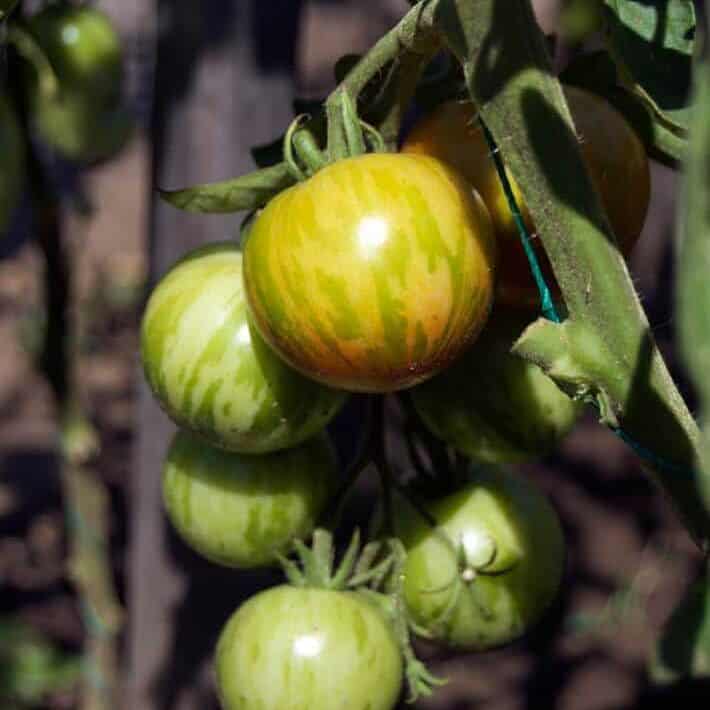
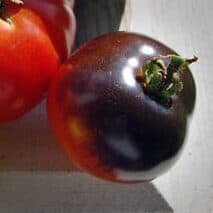
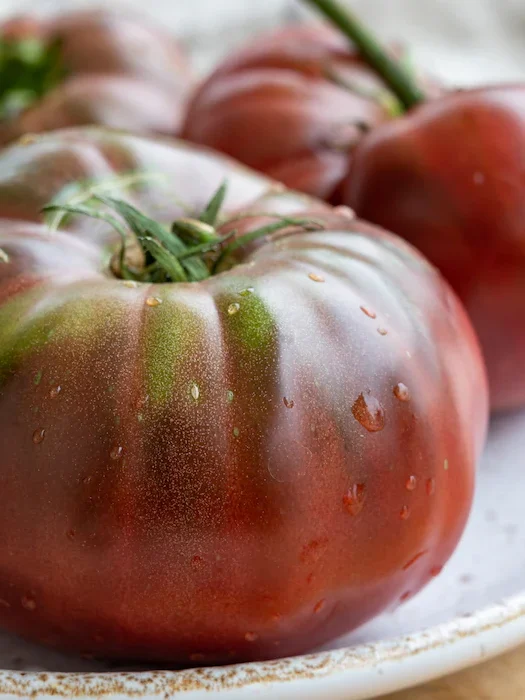
BLACK KRIM
My favourite tomato variety is Black Krim. ALSO a new heirloom variety, introduced in 1990. It's a firm tomato that is a nice dark colour with good tomato flavour. A dusky kind of flavour.


A Yellow Tomato 🤷♀️
A fellow gardener gave me a yellow tomato, and when I asked what variety it was because it was delicous, all I caught was “Carolina.” That leaves me with two options: Carolina Yellow, an heirloom I can save seed from, or Carolina Gold, a hybrid that might grow into something completely unrecognizable next year.
CANDYLAND
This is a candyland tomato I planted in a pot and then espaliered with string. It got 40 million thousand twenty teen times bigger than this. All covered in tiny red tomatoes. They're beautiful for flower arranging and delightful on a plate.
Seeds can be saved from heirloom varieties and planted the next year. Hybrids cannot.
🌿 Heirloom / Open-Pollinated Varieties
Black Krim tomato
Brandywine tomato
Green Zebra tomato
Northern Italian Red Pear tomato
Indigo Rose tomato
Black Beauty zucchini
Emerite pole bean
Turtle dry bean
Kidney dry bean
Red Acres cabbage
French Breakfast radish
Detroit Dark Red beet
Kennebec potato
Burbank Russet potato
Beauregard sweet potato
Merlot lettuce
Parris (Parris Island Cos) lettuce
Black Seeded Simpson lettuce
Red of Florence onion
Biquinho hot pepper
Bright Lights swiss chard
Purple (Basil)
Telegraph cucumber
Luffa
Jelly Melon
⚙️ Hybrid (F1) Varieties
Zenzei tomato
Boldar beet
Merlin beet
Burney broccoli
Purple Magic broccoli
Snow Crown cauliflower
Farao cabbage
Gunma cabbage
Tango celery
Red Impact pepper
San Joaquin pepper
Newburg onion
Oriole chard
Raxe radish
Honeynut winter squash
Kabocha (Sweet Jade) winter squash
Century Star watermelon
Serendipity sweet corn
Eureka pickling cucumber
Paonia head lettuce
This isn’t an exhaustive list of everything I’ve loved growing—it’s this year’s lineup. Some favourites didn’t make the cut, because like everyone else, I only have so much space. I’ve accepted this limitation with grace, maturity, and by planting everything anyway and hoping basic math doesn’t apply to gardens.
I can’t promise these varieties will take root in your garden the way they have in mine—but they’re a good place to start sowing.

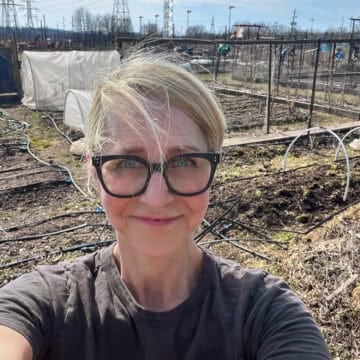
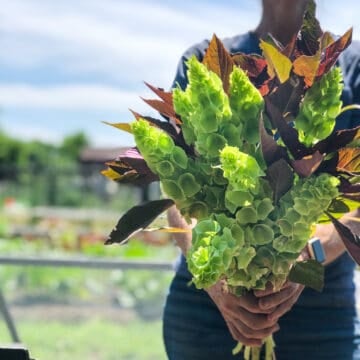
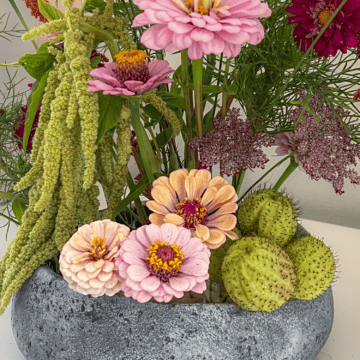

Comments
No Comments